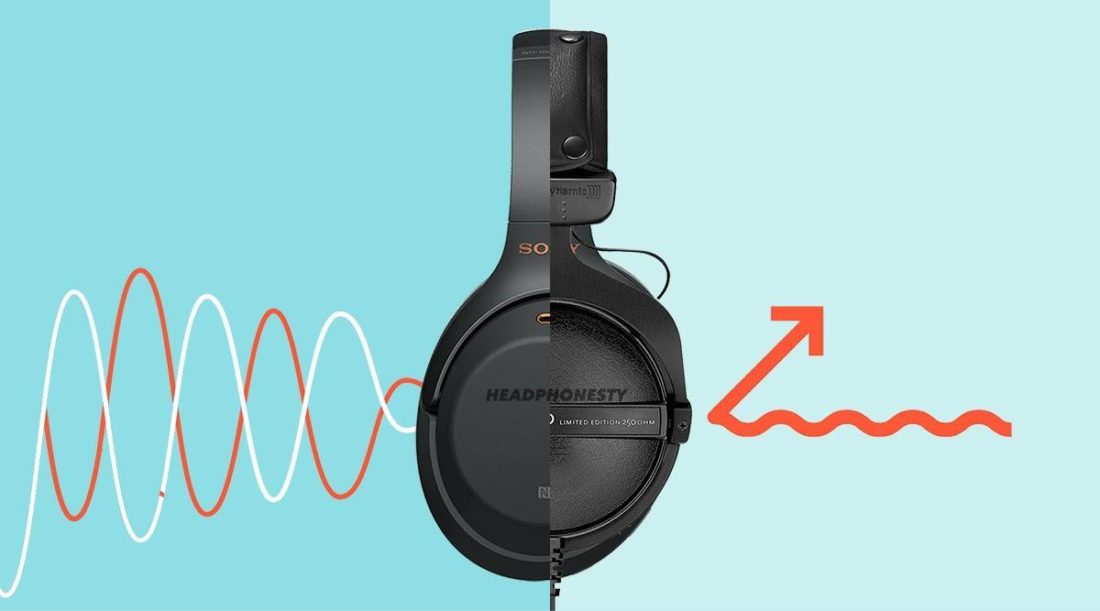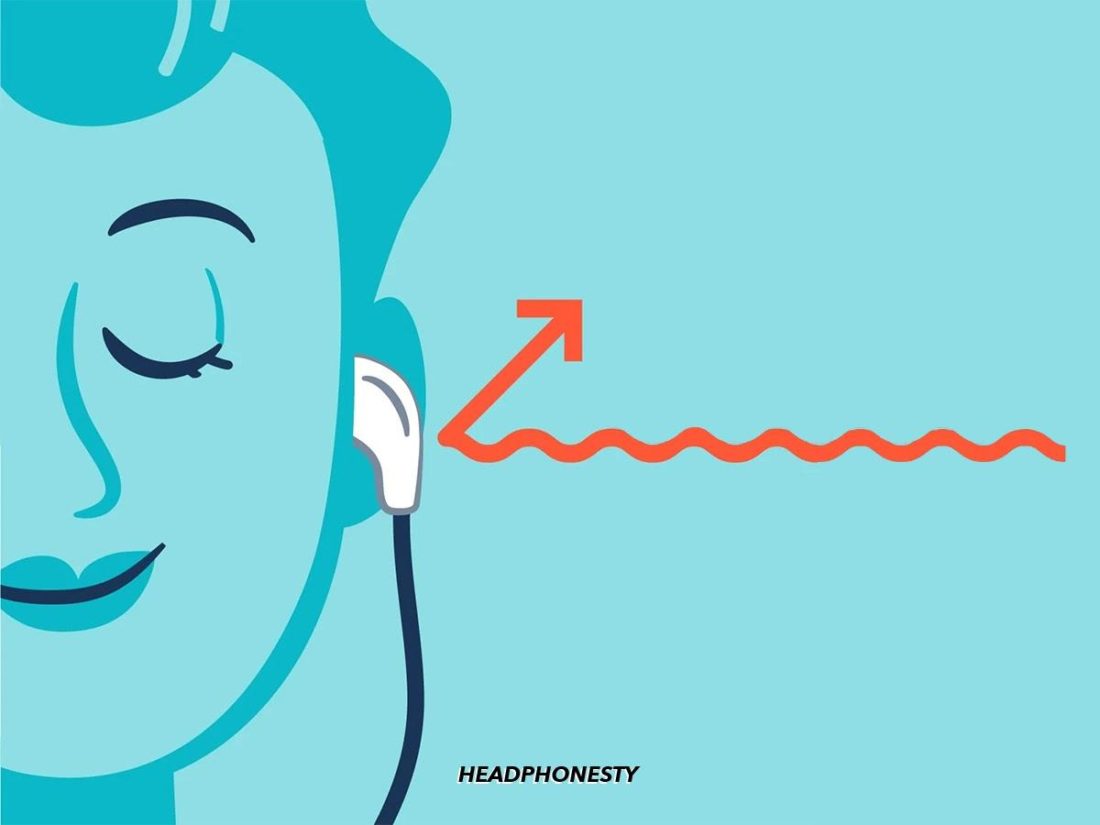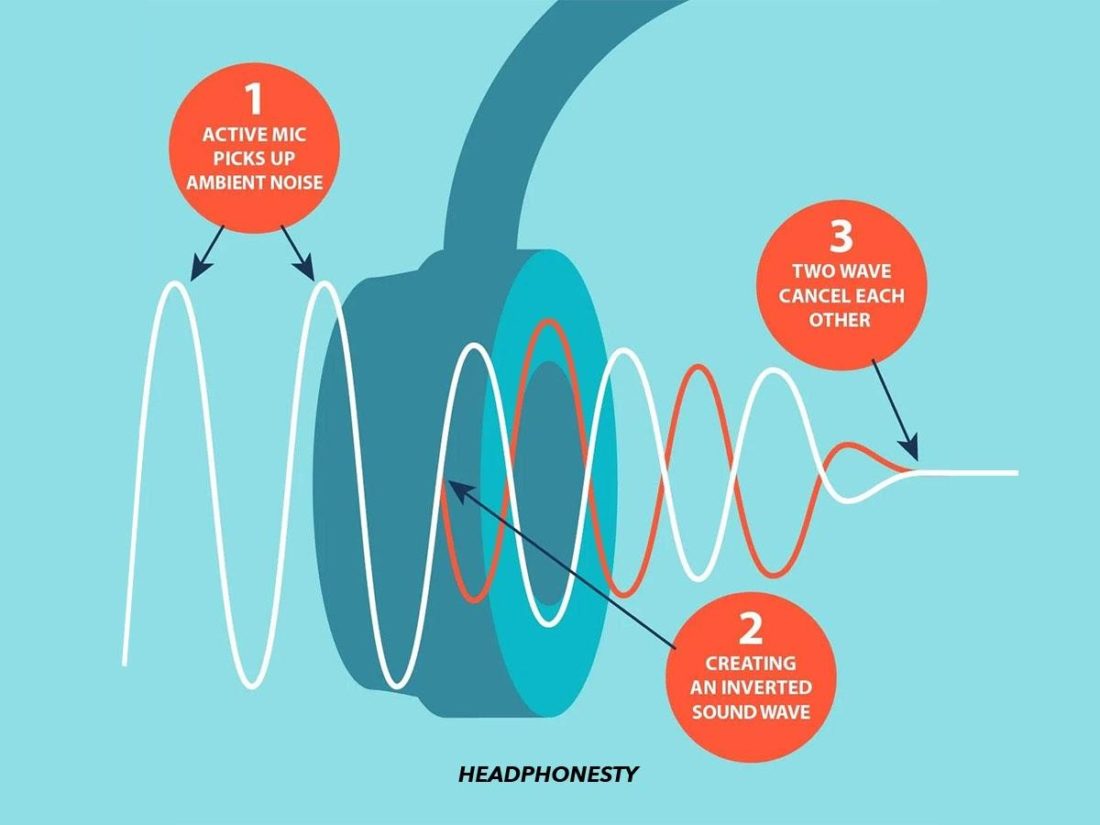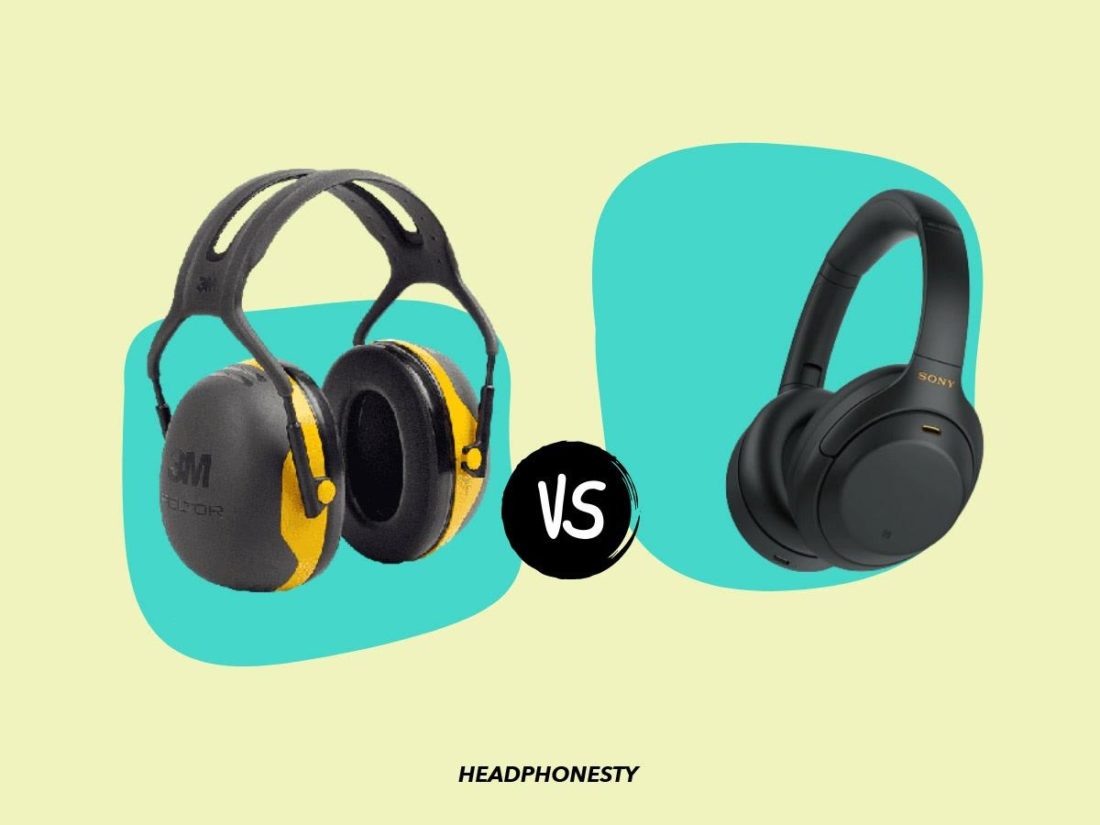Do you ever sit down at a café, fully prepared to work and be productive, only to be distracted by the noise around you? Noise cancelling headphones sound like the perfect solution in times like this. Besides, they have many advanced features and a lot of people swear by them, so they must be good. But, not everyone can focus when there’s music playing in the background. Some people prefer absolute silence, especially when meditating or relaxing. The question is, will noise cancelling headphones still isolate you from the outside world if no music is being played? Look no further. In this article, we answer the budding questions on whether or not noise cancelling headphones still work with no music, or if you should go for other alternatives.
Can Noise Cancelling Headphones Work Without Music?
Yes, noise cancelling headphones can still work without music! True, playing music boosts the noise-reducing qualities of noise cancelling headphones. Your music’s frequencies tend to fight and stand out against the ambient noise, making you feel more isolated. But this is counterintuitive to someone who just wants complete silence. Luckily, noise cancelling headphones are great at blocking background noise even without music. They can effortlessly reduce the sound of busy streets or shops. But they’re even more useful for ambient noise, which are noises that are repetitive and long-lasting. Examples are the hum of an air conditioner when you’re relaxing at home or the whirring of engines in an airplane cabin. Unfortunately, they’re not great at blocking sounds that are high-pitched and fluctuating. A classic example of this is people talking.
How Do Noise Cancelling Headphones Work?
Noise cancelling headphones can block out the sounds around the user. This is helpful when you’re in a busy place and you want some peace and quiet. There are many of these headphones in the market, but popular picks include the AirPods Pro and Sony WH-1000XM4. Noise cancelling technology blocks outside noise in two ways. The first is called passive noise cancellation, which involves physically shutting out the sounds around you. The second is called active noise cancellation, which involves electronically cancelling out the soundwaves before you hear them. Let’s talk about these two ways in detail:
How passive noise cancellation works
Passive noise cancellation doesn’t use power or electronics. Instead, it completely depends on physical barriers to isolate your ears from the environment. Most headphones, especially over-ear headphones and in-ear monitors, have this feature. They are designed to enclose your ears with padding (or ear tips) and create an air-tight seal, which blocks out and muffles ambient sound. Think of how it sounds when you cover your ears with your hands. Much quieter, right? That’s basically what it does. However, effectiveness still depends on the headphones’ overall design. Factors that affect a headphones’ noise isolation include ear cup size, thickness and material of the padding, fit around the ears, and the tightness of the headband’s clamp.
How active noise cancellation works
Active noise cancellation (ANC), on the other hand, is more sophisticated. It does everything passive noise isolation can. But it also electronically cancels out unwanted sound waves from the environment. This is useful for those who want absolute silence when they’re working or sleeping. How does this work? First, we need to establish that sound travels through waves. ANC works by analyzing the ambient noise using miniature microphones and creating an opposite signal (aka anti-phase) to counter it. When these two waves combine, they cancel each other out and you hear nothing. It’s like adding +1 and -1; you end up with zero. Because they require more parts and more sophisticated circuitry, ANC headphones are typically more expensive than their noise isolating counterparts. But you can find budget-friendly ANC headphones if you know where to look (we got you!).
The Limitations of Using Noise Cancelling Headphones Without Music
Yes, noise cancelling headphones still give you the silence you need even without playing music. That said, they still have limitations. And because playing music increases the noise-reducing qualities of these headphones, their limitations become more apparent without music. Let’s discuss the most common concerns below:
Can’t block noise entirely
Noise isolating/cancelling headphones significantly reduce the sounds you hear. But they can’t completely turn off your surroundings. As mentioned, noise isolating headphones create a physical barrier to muffle the sounds around you. Depending on their fit, type, and general build, noise isolating headphones can block noises at mid- to high- frequencies by about 15-30 dB on average. However, they don’t reduce noise in the low-frequency range (20-800 Hz). In contrast, on top of the 15-30 dB blocked from passive noise cancellation, ANC headphones can also block an additional 30 dB of low frequency (<1kHz) noise. As a result, ANC headphones can reduce noise by as much as 60 dB. However, while ANC headphones are great in cancelling a bigger range of noise, you still shouldn’t expect total silence when wearing them. Because of how ANC technology works, the ambient sounds picked up by the microphone have to travel through the circuitry before getting inverted and cancelled. This creates a small lag in the noise cancellation. That is why ANC headphones work best in cancelling noise that is repetitive and long-lasting (like the hum of an air conditioner) compared to sudden noises (like gunshots). This is important in places with a lot of people. Human speech tends to be higher-pitched and random, so you may still hear people talking even with a pair of good ANC headphones.
Restricted by battery life
ANC headphones work in both wired and wireless modes. But even when you’re using them wired, the headphones’ batteries need to be charged for ANC to work. This is because the circuit that cancels out ambient noise needs a separate power source to function. That power source is provided by either a rechargeable or a replaceable battery in the headphones. Hence, battery life is a huge factor in choosing your noise cancelling headphones. The average battery life of noise cancelling headphones varies widely depending on the brand and model. But expect that turning ANC on drains the battery much quicker than if ANC is turned off.
May cause pressure on the ears
ANC headphones cancel low-frequency ambient noises. This makes your brain think that there’s a change in air pressure and results in some people feeling “pressure” in their ears. You experience the same feeling as when you go to high altitudes (ex. plane ride) and you want your ears to “pop”. For this reason, some people think that ANC headphones are unsafe. But because the lack of low-frequency sounds is due to the ANC and not a difference in air pressure, popping your ears won’t fix it. This results in the “pressure” bothering you until you take off the headphones. Oftentimes, you can compensate for the loss of low-frequency ambient noises by listening to music with great bass frequencies. That’s why not listening to music further agitates this issue. Don’t worry if this happens to you though! ANC technology just isn’t for everyone. Some users quickly adjust to it and feel fine even after using ANC headphones all day. Others can only last a limited amount of time. If you’re part of the latter, passive noise isolation might be the best option for you.
Should You Go for Hearing Protection Devices Instead?
Just like noise cancelling headphones, hearing protection devices (HPDs) are devices worn inside or over the ears to protect them from dangerously loud noise. HPDs prevent negative side effects of loud noise exposure, such as noise-induced hearing loss and tinnitus. Different types of HPDs are available today, including earplugs, earmuffs, and electronic HPDs. Each person will likely require a different type of HPD based on their needs. Factors that affect which HPD to go for include: noise level to reduce, work environment, the comfort of use, fit of the HPD, and compatibility with your work.
Noise Cancelling Headphones vs Hearing Protection Devices
Though noise cancelling headphones and HPDs may seem similar, they have different purposes. Basically, noise cancelling headphones are made to block ambient noise in casual situations, while HPDs are made to protect against occupational noise exposure.
Noise Reduction Ratings
HPDs also have government-accredited noise reduction ratings (NRRs) and are tested by laboratories. This makes them more reliable in reducing noise compared to noise cancelling headphones.
Design
The next difference to consider is their look and bulk. One of the most common types HPDs are earmuffs, which are typically bulkier than noise cancelling headphones. This is because noise cancelling headphones are made to be stylish enough to wear on most occasions. On the other hand, HPDs are made for specific job-related purposes, like mowing a lawn or industrial work so the style isn’t a priority. There are, however, smaller HPDs like earplugs if you want something less obvious.
Sound Quality
One more difference is their ability to play music. Some HPDs may allow you to listen to music (typically up to 85dB), but their features are not as advanced as those of noise cancelling headphones. For one, sound quality isn’t a priority for most HPDs; some even don’t have any music listening option. For those who do, they usually only have standard drivers – the same as what you may expect with low-quality headphones. In comparison, listening to music is one of the primary features of noise cancelling headphones. So you can expect their sound quality to be better. Some of them even have companion apps where you can adjust the EQ for better sound quality. Noise cancelling headphones remove ambient noise and allow you to enjoy music at lower volumes. However, there is no upper limit to their volume levels. Some of these devices can play sounds at 110 dB, a level damaging to your hearing.
Which should you go for?
So, between noise cancelling headphones and HPDs, which one should you choose? If you’re an average Joe who works at an office and wants some peace and quiet, then noise cancelling headphones are probably enough for your needs. But if you work in a very noisy environment that can damage your hearing, then it might be time to invest in a good HPD.
Conclusion
In a world as noisy and busy as ours, it’s hard to achieve complete silence. But with new and constantly evolving technology, we can get pretty close. We hope that by reading this article, you’ve learned about how noise cancelling technology works. And that you now know when to use which kind of device! What did you think about the article? Did you learn something new? Something useful? Do you think we forgot to talk about an important point? Let us know in the comments below!



